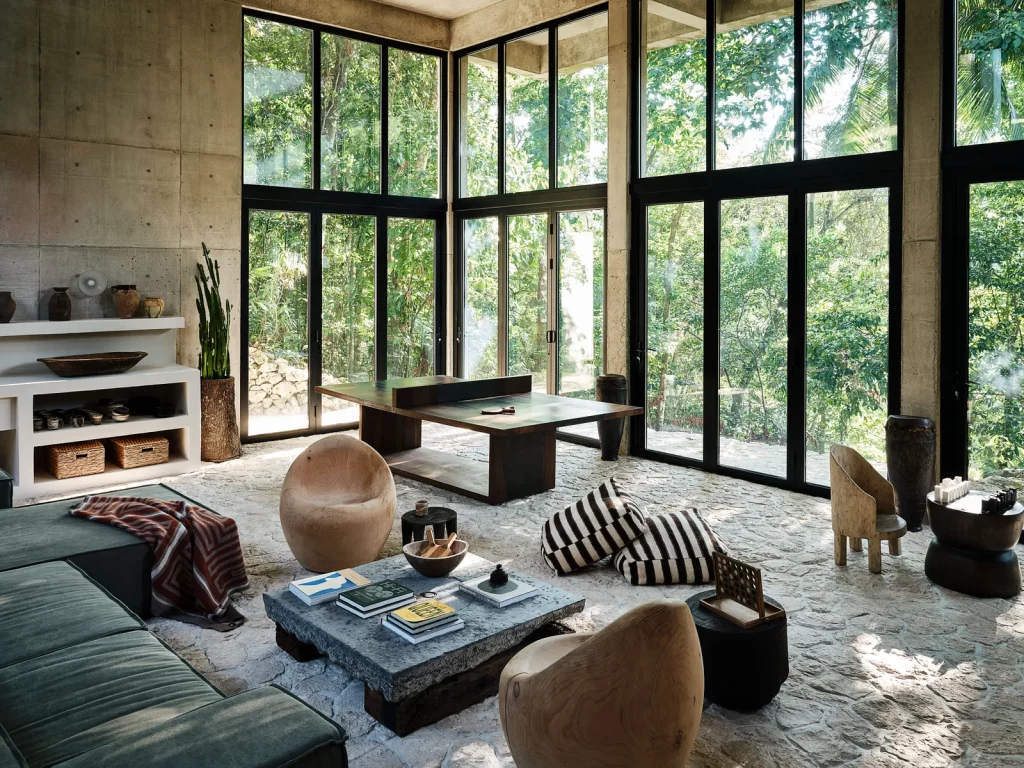The Concrete Revolution and the Lush Tropics Come Together
In the congested world of modern design, where glossy minimalism is typically the norm, a rougher, more rebellious style is becoming more popular: Tropical Brutalism. This movement is more than just a trend in interior design; it’s a dramatic architectural fusion that takes the harsh, intimidating philosophy of mid-century Brutalism and adapts it to the lush environs and special needs of the equator.
This is the style of architecture known as the “concrete jungle.” It is a bold, rough style that can be seen mostly throughout the Global South, which includes Latin America, Southeast Asia, and Africa. Brutalism was not just a trend that came from other places; it was a vital new way of looking at things, a political statement, and a victory for local creativity. It is where b eton brut (raw concrete) learnt how to live with the jungle.
The Raw Roots: Understanding Traditional Brutalism
To comprehend Tropical Brutalism, one must initially examine its origins in post-World War II Europe.
Brutalism came about in the 1950s as a strong response to what people thought were the frivolous and ornamental aspects of previous Modernist forms. Architects like Le Corbusier popularized the style, which is based on the French word “beˊton brut,” which means “raw concrete.” It was all about practical honesty and structural clarity.
The main ideas behind this original movement were very clear:
- Exposed Materials: Mostly raw, unfinished concrete that was left as-is, showing the grain of the wooden molds (formwork) that were used to shape it.
- Monolithic Forms: Huge, block-like geometric formations that are frequently very imposing.
- Function Over Form: A design concept that puts a building’s use ahead of how it looks.
This strict way of doing things worked well in Europe and North America, but it often didn’t work well in the tropics. Brutalism that was brought in, with small windows and heavy, heat-retaining massing, was too hot and stuffy to be useful in humid climes. This required a remarkable adaption to the region.
 Diplo’s Jamaican Jungle Mansion
Diplo’s Jamaican Jungle Mansion
The Tropical Adaptation: Where Form Meets Climate
Tropical Brutalism, also known as Jungle Brutalist, fixed the problems with its ancestor’s climate by changing the way its materials were used. This localized design changed concrete from a thermal liability to a friend against the weather. It was very much in line with the ideas of Critical Regionalism, which is architecture that intentionally responds to its area.
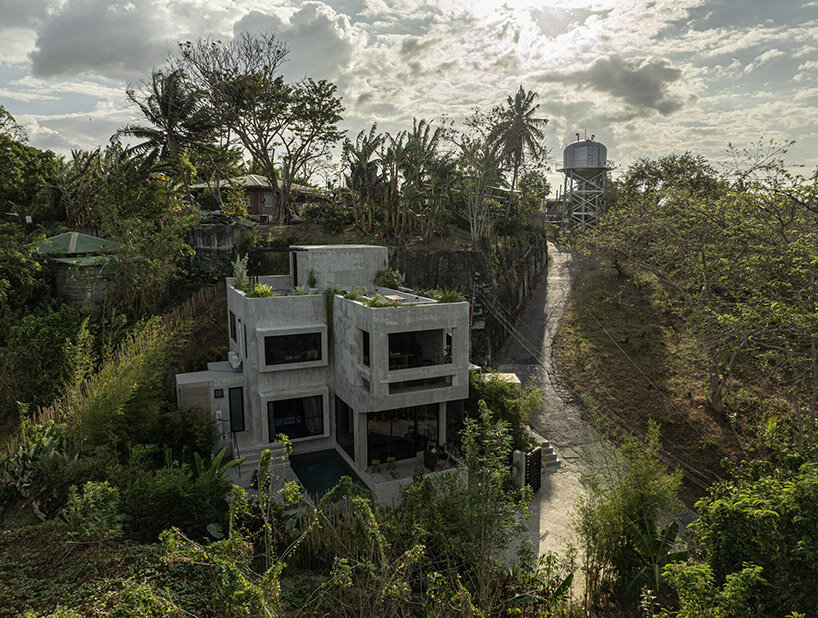 images courtesy Cali Architects
images courtesy Cali Architects
The Five Pillars of Brutalism in the Tropics
Five different design principles are what make this fusion look good:
1. Working with plants
The tropical variant of Brutalism, on the other hand, welcomes nature. Plants are not just for show; they are an important part of architecture. Plants, vines, and moss can grow up concrete fins and over bare walls, which helps keep the heat down and gives the concrete a “living ruin” look. The outcome is a building that looks like it’s coming out of the jungle instead than resisting it.
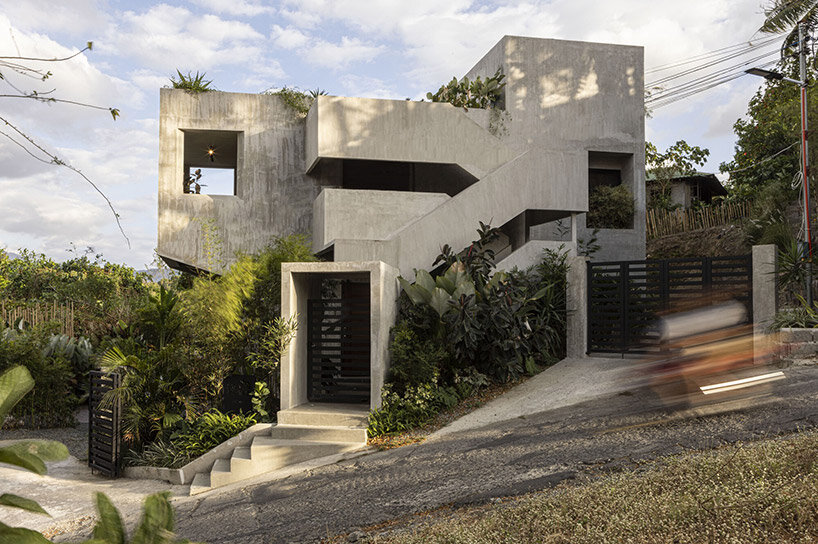 Cali Architects believes a house is a sculpture that shapes its residents and their way of life
Cali Architects believes a house is a sculpture that shapes its residents and their way of life
2. Climate Control That Doesn’t Use Energy
The use of concrete is suited to the climate in the area:
- Deep Overhangs and Brise-Soleils: Huge concrete fins or deep holes block the high tropical sun from hitting big glass surfaces, keeping the heat out while letting in soft light.
- Natural Ventilation: The buildings have open floor plans, internal courtyards, and big voids that let air flow between them. This helps keep the structures cool and dry, which is very different from the closed, solid volumes of its European predecessor.
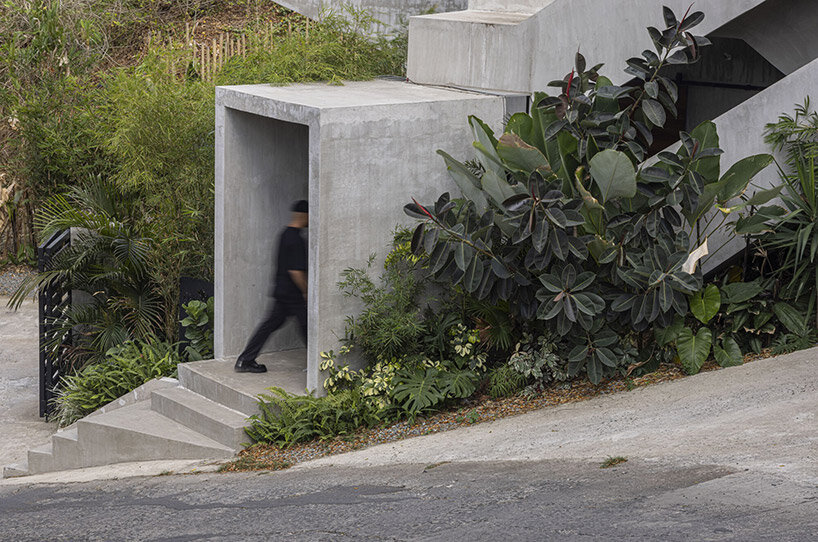 windows frame scenic views and bathe the interior in natural light
windows frame scenic views and bathe the interior in natural light
3. Water as a Part
Water management is very important in tropical areas with a lot of rain. When it rains heavily, concrete forms are often made to direct the water into deep, shaded cisterns or interior reflecting ponds. These water features do two things: they cool the air by evaporating and they show off how rain moves through the building.
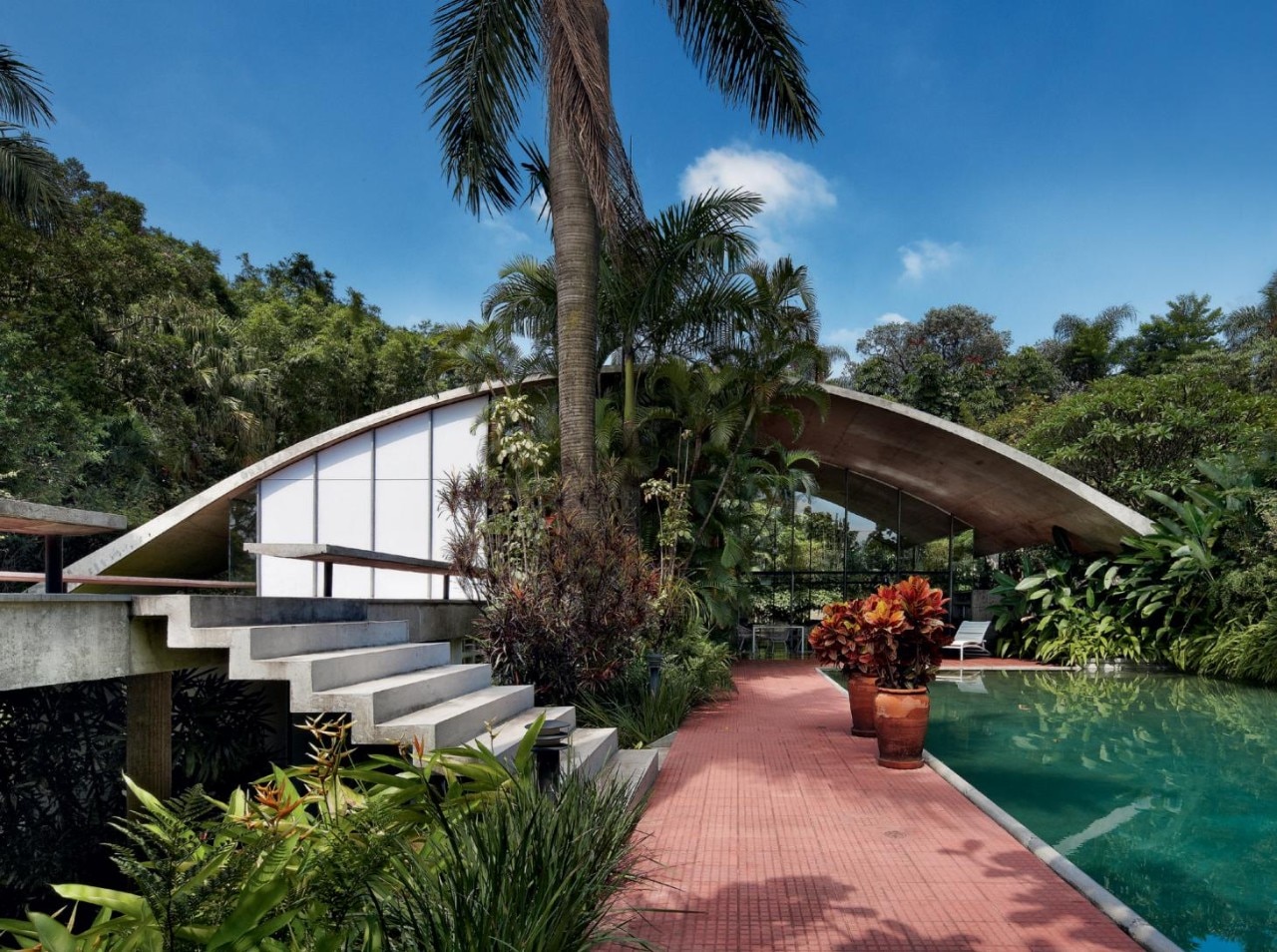
Source: domusweb.it
4. Difference in Raw Materials
The conflict between the raw and the organic defines the aesthetic. Dark, locally-sourced hardwoods (like teak or mahogany) and enormous panes of glass are used to make the raw concrete look even more interesting. This color scheme gives the room a classy, melancholy look by focusing on texture instead of color.
The Global South: A Statement of Who We Are
The movement’s geographical center is in the Global South. Brutalism was very appealing to newly independent or quickly growing countries in the middle of the 20th century since it was not Westernized.
Brutalism as a National Identity
Architects in Brazil (Oscar Niemeyer), Mexico (Teodoro González de León), and India (Charles Correa) used the style as a sign of modernity, strength, and independence, which was a distinct break from the colonial styles of the past. People thought that the strong, plain concrete was an honest and democratic material that was good for creating government buildings, universities, and public housing that supported a social agenda.
Charles Correa, a famous Indian architect, was a great exemplar of this approach. His work was a clear example of Critical Regionalism because it used modernist language to fit India’s particular environment and culture and didn’t use foreign designs that weren’t right for India.
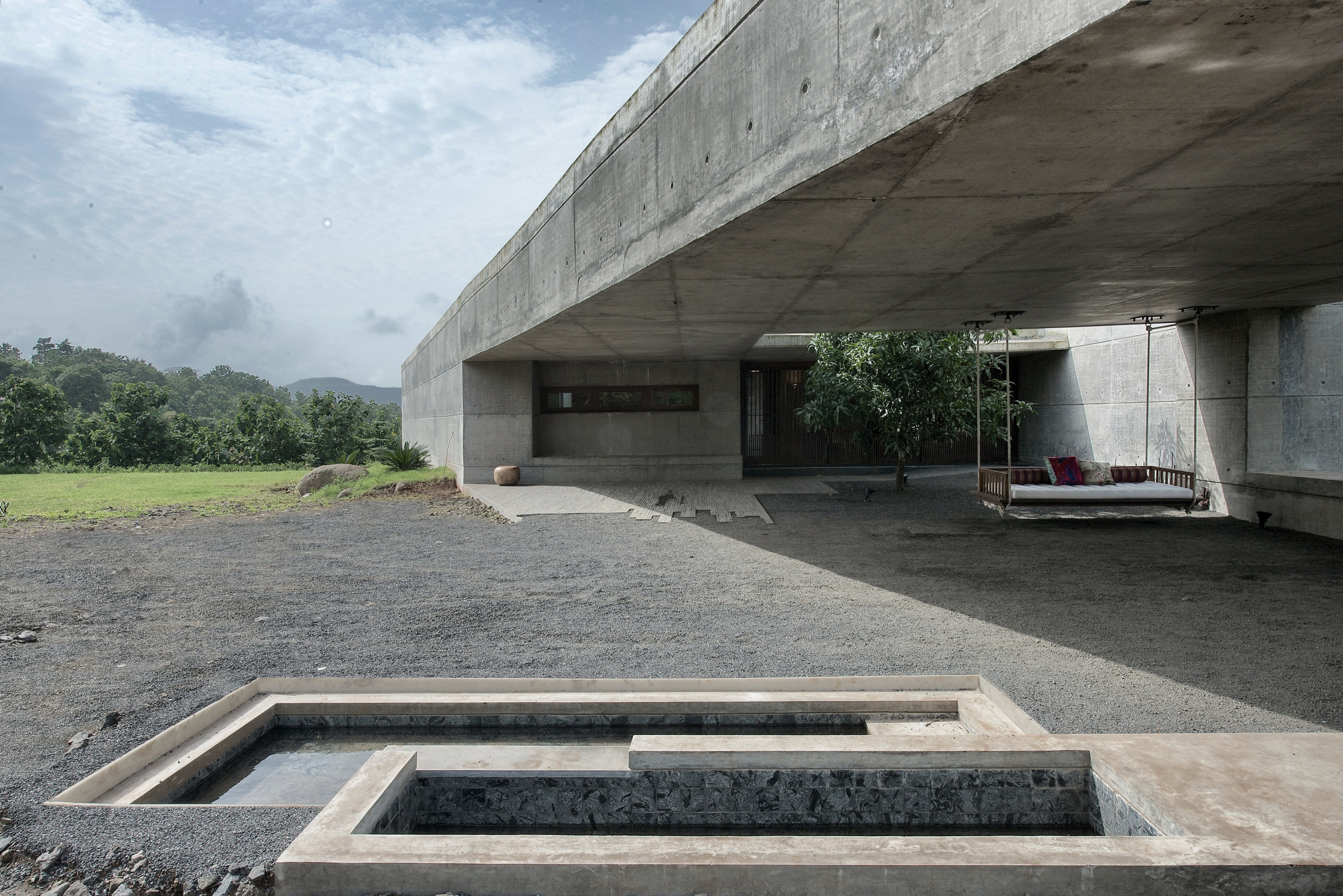
The house cast in liquid stone by SPASM Design Architects, Khopoli India
A Legacy of Social Intent
In many Western cities, Brutalist public housing was seen as frigid and isolated. In the Global South, on the other hand, the buildings frequently have the weight of unfinished social enterprises. Even though that promise was frequently broken because of political or economic problems, they were monuments to a cohesive, contemporary future. Today, these buildings are physical reminders of a time when people wanted to be politically involved in their country.
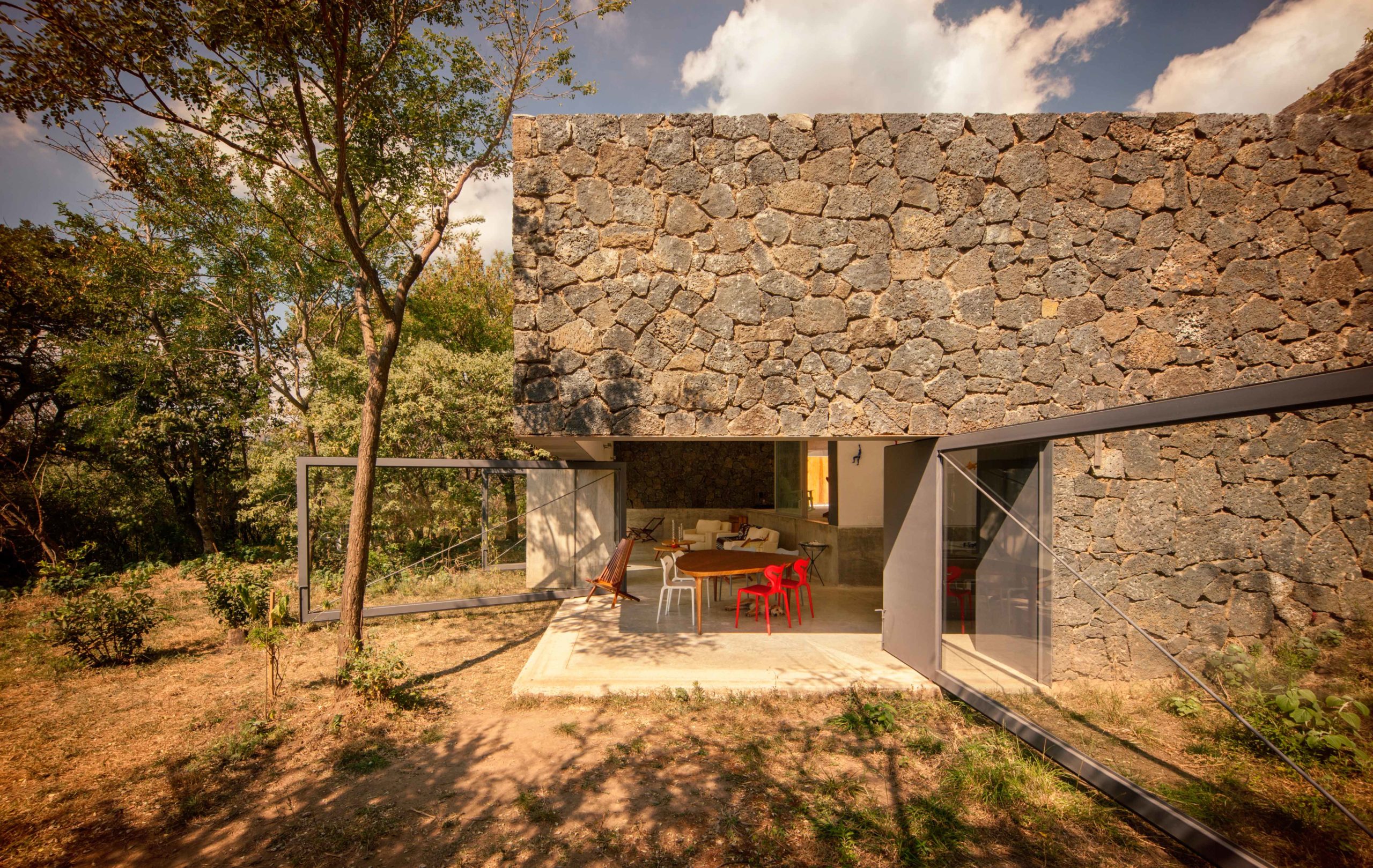
Casa Meztitla by EDAA | Estrategias para el Desarrollo de Arquitectura, Tepoztlán, Mexico
The Modern Revival and the “Concrete Jungle” Look
Tropical Brutalism has become popular with modern designers in the last several years. It has gone from being a localized style to a global design trend. There are a number of reasons why this current renaissance is happening:
- Search for Authenticity: In a digital age full of smooth, polished looks, the rough, honest feel of concrete and unpolished wood is a welcome change. Architects tend to prefer texture over surface.
- Sustainability and Resilience: The style’s use of passive cooling and long-lasting, local materials fits with modern aims for sustainability. These buildings are built to last through bad weather, which is becoming more and more important in a world where the climate is changing.
- Visual Impact: The contrast between dark, rough concrete and bright, lush plants makes for a dramatic, photo-ready look that is popular on social media and is commonly called “Concrete Jungle” or “Moody Paradise” design.
The style is known for producing a mood of surprising paradise, a place that is both raw, strong, and deeply peaceful. Examples include Diplo’s “Jungle Mansion” in Bali and boutique hotels in Tulum and Vietnam.

Source: globalgraphica.com
Conclusion: The Enduring Power of Context
Tropical Brutalism is more than simply a trend; it’s a great example of how global architectural ideas need to fit in with the local environment. It is a strong proof of how smart architects in the Global South are since they didn’t just copy a Western movement; they made it better. By combining the honest structure of Brutalism with the life-giving energy of the tropics, they made an architecture that is eternal, strong, useful, and deeply connected to its place.
References:
Concrete Jungle: Tropical Brutalism is Having a Moment | ADORNO DESIGN
The Evolution Of Tropical Brutalism – Something Curated
For more blogs like this CLICK HERE!!

